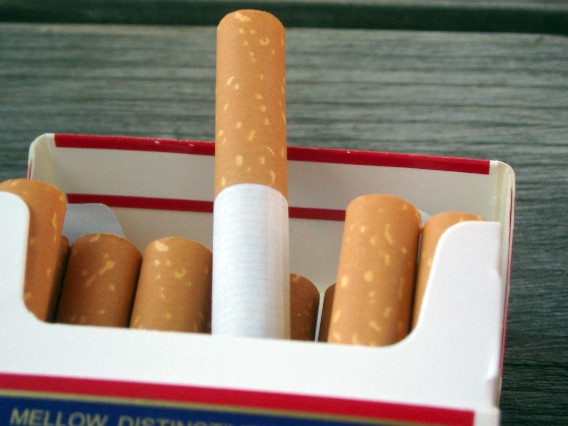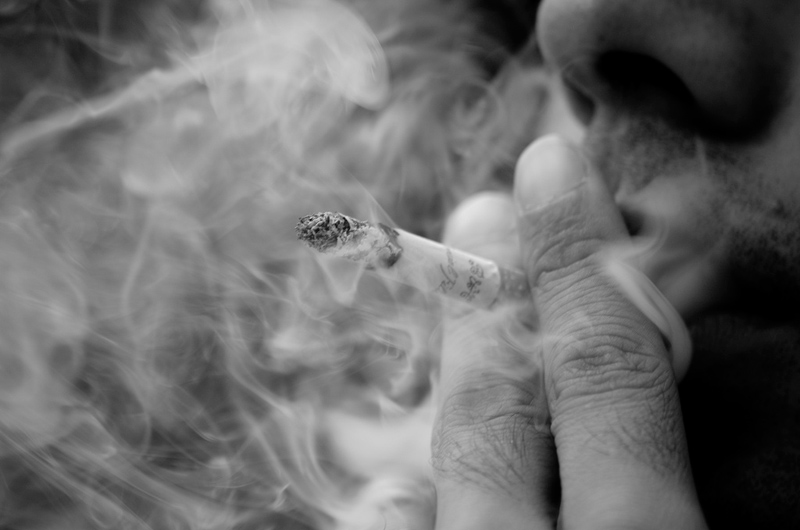Submitted by Anne Landman on
 Several newspapers reported in late January on the death of Horace R. Kornegay, Jr., who served as the Executive Director of the Tobacco Institute from 1969 to 1986. Mr. Kornegay's passing was little noticed, but he was one of the more notable opponents of public health measures in American history.
Several newspapers reported in late January on the death of Horace R. Kornegay, Jr., who served as the Executive Director of the Tobacco Institute from 1969 to 1986. Mr. Kornegay's passing was little noticed, but he was one of the more notable opponents of public health measures in American history.
Mr. Kornegay took over at the Institute just five years after the U.S. Public Health Service and Surgeon General's first report in 1964 positively linked smoking to a list of chronic and deadly diseases. In his speeches, Kornegay typically portrayed public health advocates -- a category that included the Surgeon General -- as a bunch of shrill, over-emotional zealots who "plied their trade with terrifying tactics" and were involved in misguided efforts to destroy the industry.
Speeches and Public Positions
On December 11, 1979, Mr. Kornegay gave a notorious speech before the Tobacco and Allied Industries Division of the American Jewish Community in which he likened attacks on the tobacco industry to the repression of Jews, and likened the industry's struggle for survival to historical efforts by Jews to "[combat] bigotry and [protect] civil rights ... " In the speech, Mr. Kornegay referred to Department of Health, Education and Welfare (HEW) Secretary Joseph A. Califano, Jr., a federal tobacco control proponent and former three pack-a-day smoker, as "Ayatollah Califano," and compared public health advocates to axe-murderers, declaring that, "The hatchet-swinging heart of Carrie Nation beats within the breast of the typical anti-smoking zealot." After this frenzied buildup, Kornegay wrapped up by saying:
Naturally, some people will suspect that we at the Tobacco Institute have spent so long fighting the cigarette controversy that we have become a little paranoid. But let me assure you that paranoia is justified. They are out there; they are out to get us ...
In the same speech, Mr. Kornegay predicted that commercial airlines would eventually ban smoking, that smoking would eventually be prohibited in federal buildings, and that the industry would be forced to place tar and nicotine numbers on the packages and strengthen the health warnings. He predicted that all of these measures would cause the industry great harm. Then, ironically -- and inadvertently -- Kornegay made a case in favor of policies eliminating public smoking:
"Consider this," he said. "If the pressure of anti-smoking laws and regulation succeeds in stopping each American smoker from lighting up just one cigarette each day, the annual consequences are devastating: Cigarette consumption would drop by more than 18 billion units. Personal spending for cigarettes would decline by more than half a billion dollars."
Ah, how many more lives could have been saved by the earlier enactment of such policies, had the industry not stood in the way and fought against them with all its resources? But this did not concern Kornegay or the industry, who both continued to fight public health authorities' efforts to reduce tobacco-related disease.
In 1979, after HEW issued a report linking maternal smoking to perinatal mortality, Kornegay dismissed it, saying, "The data suggest that such factors as ... hospital pay status (public vs. private) have greater effects on pregnancy outcomes than maternal smoking."
 When society became alarmed over skyrocketing rate of lung cancer in the 1970s, Kornegay deflected attention from cigarettes by attributing the increase to improved medical diagnostic techniques.
When society became alarmed over skyrocketing rate of lung cancer in the 1970s, Kornegay deflected attention from cigarettes by attributing the increase to improved medical diagnostic techniques.
When Eastern Airlines attempted to create separate smoking and non-smoking sections on their commercial flights in 1977, Mr. Kornegay wrote a near-hysterical letter to industry supporters to get them to oppose it:
Eastern Airlines has entered an unconscionable agreement with Prohibitionist "consumer groups" to squeeze travelers who enjoy tobacco into the rear third of its flight cabins. The agreement was reached was privately in spite of its implications of potential second-class citizenship for 55 million Americans! As of today, it's on file at the U.S. Civil Aeronautics Board where the airline and the anti-tobacco activists are pushing for its approval ...
Legacy
Mr. Kornegay was central to the tobacco industry's decades-long battle to thwart tobacco control in the U.S., but more importantly to history, he personified the industry's combative stance in the wake of overwhelming published research implicating smoking as a cause of disease and death. It was a stance that will not be forgotten.

Comments
Anonymous replied on Permalink
Tobacco Institute was delegalized
Anonymous replied on Permalink
Kornegay's WW II Army experience
Anonymous replied on Permalink
Horace Kornegay's WW II Experience